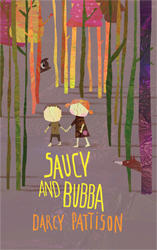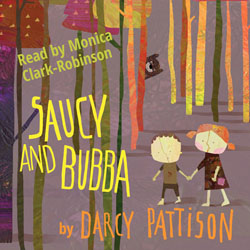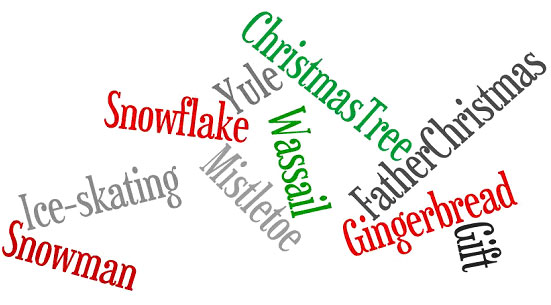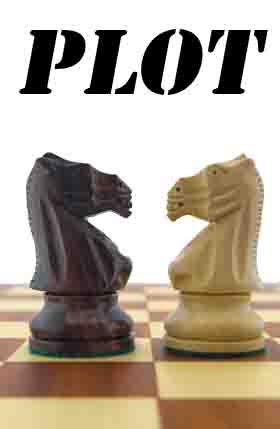 |
| aspen penguin ©the enchanted easel 2014 |
 |
| alaska penguin ©the enchanted easel 2014 |
 |
| aspen penguin ©the enchanted easel 2014 |
 |
| alaska penguin ©the enchanted easel 2014 |
 |
| ©the enchanted easel 2014 |
 |
| ©the enchanted easel 2014 |
 Available at these eBook stores
Mims House eBookStore
Nook
Kindle
Kobo
iBookstore
Available at these eBook stores
Mims House eBookStore
Nook
Kindle
Kobo
iBookstore
 iTunes Store
Amazon
Audible
iTunes Store
Amazon
Audible
So, I have a general outline of my story but the writing still isn’t flowing. I realized that I need to break down major events into smaller sections, so I will know what to write.
I’ve gone through two stages of plotting or outlining, each one getting more specific. Here’s an example:
1. First, I stared with major plot points:
A volcano threatens to blow up, so Jake gets alien Rison technology to make it stop.
2. Second, I start to layout possible scenes.
At one point, he realizes he needs the alien technology, so he makes arrangements to get it. I wrote this: Later, at home, Jake contacts Mom, who gives him a contact on Rison who can ship him some technology and he orders what he needs to counter-attack the technology Cy used. Keeping up his volunteer work, Jake goes kayaking with Bobbie Fleming.
At this level, a scene may be summarized in a single sentence. However, it’s more helpful to break down both sentences further.
3. On the third pass, I’m looking to split up the action into several scenes, or at least flesh out the one scene a bit better.
Later, at home, Jake contacts Mom, who gives him a contact on Rison who can ship him some technology and he orders what he needs to counter-attack the technology Cy used. Conflict with Mom because he really wants to try swim team and she’s distracted b/c negotiations going so badly.
Keeping up his volunteer work, Jake goes kayaking with Bobbie Fleming. Bobbie Fleming, a harbor seal upsets Jake’s kayak. Of course, he has no problem with righting the canoe and getting back in and getting back to shore. But something nags at him, the waters feel more like home than the Gulf waters did. Something about being IN Puget Sound—there was something THERE. He had to find out what?

Plot is a way of examining story to see its underlying structure. Starting with a general idea and subdividing toward a specific plot often gives a writer the direction needed for the story to work.
Need a more structured approach to something similar? The Snowflake Method, by Randy Ingermanson is a very structured approach that starts with a single sentence, and then splits that into two sentences, the two into four sentences, etc. until the story takes shape. It’s a structured outlining process with built-in steps for developing characters. Randy has a Ph.D. in theoretical physics, and his structured thinking shows in this method, which he’s turned into a software program and various books. If you need a very structured program, you may like the help you’ll get from the Snowflake Method.
Another option for approaching plot in a structured way is Lazette Gifford’s Phases system. You should read her original article about Phases here. She suggests that you write a numbered list of “phases” or short summaries of action. These can be scenes, transitions, thinking about what just happened and so on.
What I like here is the reference to the overall novel. Gifford suggests that you use MSWord’s auto-numbering feature to write phases for your novel.
For example, if you want to write 50,000 words, Gifford, in her free ebook, Nano for the New and Insane, breaks the 50,000 word length into phases:
- 60 Phases in the outline — 834 words per phase — 2 phase sections per day
- 120 Phases in the outline — 417 words
per phase — 4 phase sections per day- 150 Phases in the outline — 334 words per
phase — 5 phase sections per day- 300 Phases in the outline — 167 words
per phase — 10 phase sections per day
In other words, I can start with 60 phases and in that space, I should have a synopsis of the the beginning, middle, and end of the story. Or, if you’d rather, think of it as Acts 1, 2, and 3. Act 1 and 3 get about 15 phases each, which leaves 30 for Act 2.
That is comforting to me. I ONLY have to decide on 15 scenes (or discrete units) for Act 1. Act 1 looms HUGE for me, but 15 scenes sounds easy.
Phases allows me to do an easy, early check on the plot, too. Each phases needs moments of high arousal: excitement, inspiration, awe, anger, humor, action, disgust or outrage. Across the phases, I can easily check on how a subplot fits into the overall structure and how the subplot progresses.
Sixty phases is something that’s easy to see and understand. Once those are set, I may try to increase to 120 words, breaking down the plot into more specific actions.
If you’re doing NaNoWriMo, this also makes the task of 50,000 words in one day much easier.
Another thing I like about the Phase method is that it’s easy to see progress. I’m all about numbers and keeping score. On 9/5, I started with 23 phases; today, I’m up to 49 phases. My goal is 60 phases by the end of the week. Then I’ll look at it further to see if I want to go for 120 or if the 60 will be good enough to write from.

Ah, the holidays. A time of leisure to eat, drink, be merry, and read up on the meaning of mistletoe in Scandinavian mythology…
Taken from the Oxford Index’s quick reference overview pages, the descriptions of the wintry-themed words above are not nearly as simplistic as you might think — and even more intriguing are the related subjects you stumble upon through the Index’s recommended links. I’ll never look at a Christmas tree the same way again.
ICE-SKATING
In its simplest form dates back many centuries, [done] with skates made out of animal bones….
→ Sonja Henie (1912 – 1969)
Norwegian figure skater. In 1923 she was Norwegian champion, between 1927 and 1936 she held ten consecutive world champion titles, and between 1928 and 1936 she won three consecutive Olympic gold medals. In 1938 she began to work in Hollywood, in, among others, the film Sun Valley Serenade (1941)…
→ Sun Valley Serenade
… Such was the popularity of the Glenn Miller Band by 1941 that it just had to appear in a film, even if the story was as light as a feather…
YULE
…The name comes from Old English gēol(a) ‘Christmas Day’; compare with Old Norse jól, originally applied to a heathen festival lasting twelve days, later to Christmas…
→ Snorri Sturluson (1178 – 1241)
Icelandic historian and poet. A leading figure of medieval Icelandic literature, he wrote the Younger Edda or Prose Edda and the Heimskringla, a history of the kings of Norway from mythical times to the year 1177…
CHRISTMAS TREE
It is generally assumed that this indisputably German custom was introduced to Britain by Queen Victoria’s husband, Prince Albert, but this is only partly true. The British royal family had had regular Christmas trees since the days of Princess Charlotte of Mecklenberg Strelitz…But it was certainly due to active promotion by Victoria and Albert that the fashion for trees spread so remarkably fast, at least among the better-off…
FATHER CHRISTMAS
– …Gives news of Christ’s birth, and urges his hearers to drink: ‘Buvez bien par toute la compagnie, Make good cheer and be right merry.’
– There were Yule Ridings in York (banned in 1572 for unruliness), where a man impersonating Yule carried cakes and meat through the street.
→ Clement C. Moore (1779 – 1863)
…Professor of Biblical learning and author of the poem popularly known as “’Twas the Night Before Christmas,” published anonymously in the Troy Sentinel (Dec. 23, 1823), widely copied, and reprinted in the author’s Poems (1844). The poem’s proper title is “A Visit from St. Nicholas.”
WASSAIL
– A festive occasion that involves drinking.
– It derives from the Old Norse greeting ves heill, ‘be in good health’.
→ Christmas
… The date was probably chosen to oppose the pagan feast of the Natalis Solis Invicti by a celebration of the birth of the ‘Sun of Righteousness’…
SNOWMAN
(1978) Raymond Briggs’s wordless picturebook uses comic‐strip techniques to depict the relationship between a boy and a snowman who comes alive in the night but melts the next day….
→ Abominable Snowman
A popular name for the yeti, recorded from the early 1920s.
→ Yeti
A large hairy creature resembling a human or bear, said to live in the highest part of the Himalayas…
…comes from Tibetan yeh-teh ‘little manlike animal’.
MISTLETOE
– Traditionally used in England to decorate houses at Christmas, when it is associated with the custom of kissing under the mistletoe.
– In Scandinavian mythology, the shaft which Loki caused the blind Hod to throw at Balder, killing him, was tipped with mistletoe, which was the only plant that could harm him.
– ‘The Mistletoe Bough’ a ballad by Thomas Bayly (1839), which recounts the story of a young bride who during a game hides herself in a chest with a spring-lock and is then trapped there; many years later her skeleton is discovered.
→ Evergreens
A high proportion of the plants important in folk customs are evergreen — a fact which can be seen either in practical or symbolic terms. Folklorists have usually highlighted the latter, suggesting that at winter festivals they represented the unconquered life-force, and at funerals immortality.
GINGERBREAD
Cake or biscuits flavoured with ginger and treacle, often baked in the shape of an animal or person, and glazed.
→ Gingerbread
The gilded scroll work and carving with which the hulls of large ships, particularly men-of-war and East Indiamen of the 15th to 18th centuries, were decorated. ‘To take some of the gilt off the gingerbread’, an act which diminishes the full enjoyment of the whole.
GIFT
– …gifts have importance for tax purposes; if they are sufficiently large they may give rise to charges under inheritance tax if given within seven years prior to death (see potentially exempt transfer).
– A gift is also a disposal for capital gains tax purposes and tax is potentially payable.
SNOWFLAKE
The result of the growth of ice crystals in a varied array of shapes. Very low temperatures usually result in small flakes; formation at temperatures near freezing point produces numerous crystals in large flakes.
→ Ice crystal
Frozen water composed of crystalline structures, e.g. needles, dendrites, hexagonal columns, and platelets.
→ Diamond dust
Minute ice crystals that form in extremely cold air. They are so small as to be barely visible and seem to hang suspended, twinkling as they reflect sunlight.
Georgia Mierswa is a marketing assistant at Oxford University Press and reports to the Global Marketing Director for online products. She began working at OUP in September 2011.
The Oxford Index is a free search and discovery tool from Oxford University Press. It is designed to help you begin your research journey by providing a single, convenient search portal for trusted scholarship from Oxford and our partners, and then point you to the most relevant related materials — from journal articles to scholarly monographs. One search brings together top quality content and unlocks connections in a way not previously possible. Take a virtual tour of the Index to learn more.
Subscribe to the OUPblog via email or RSS.
The post A holiday maze appeared first on OUPblog.
I’ve been thinking about plot and looking through my library of writing books to see the big picture of how plot is discussed and taught, how writers approach plot. It seems to me that the discussions fall into about 9 camps.
1. Plot equals character. This camp says that the characters and their problems will move the story. If you know your characters well enough, they will get into and out of scraps and fights and interesting problems. Usually, but not always, this is accompanied with the encouragement to just start writing and see where the character takes you.
 It seems to me that people who successfully write this way have a deeply ingrained, unconsciously competent, intuitive grasp of a story arc that includes a character facing his deepest fears and growing or changing some way as a result. As they write, they try to align the character with this inner sense of character. In Jack Bickham’s book, Scene & Structure, one appendix is of a Master Plot, detailing one particular way to conceive of the plot structure; authors who begin with character have an internal Master Plot of character.
It seems to me that people who successfully write this way have a deeply ingrained, unconsciously competent, intuitive grasp of a story arc that includes a character facing his deepest fears and growing or changing some way as a result. As they write, they try to align the character with this inner sense of character. In Jack Bickham’s book, Scene & Structure, one appendix is of a Master Plot, detailing one particular way to conceive of the plot structure; authors who begin with character have an internal Master Plot of character.
Those who are unsuccessful at this approach can create interesting characters who do interesting things, but they don’t key in to the deepest fears, don’t make the character suffer and change and grow.
Other readings about starting with character:
2. Plot is a branching structure. If you start with a single statement, you can split it to two statements, and split that to four and that to eight and so on. Examples of proponents of this method are the Randy Ingermanson’s Snowflake Method, and How to Write a Damn Good Novel by James N. Frey.
Basically, you start with the Deep Theme (Snowflake) or Premise (Frey) which could describe the entire novel in a single sentence. Then you develop it by making it two (or three) sentences. Then each of those is divided into several sentences, 4-6 sentences. And so on.
The key to this is knowing, rather than discovering, the deep theme or premise. Some people start from the thinnest of threads and need those exploratory drafts to find out about character and theme. If you fall into this camp, then use Snowflaking as a revision strategy, instead of a first draft strategy.
More reading:
3. Universal Plots. Some say there are only two plots in the world: a stranger comes to town or a character goes on a journey. Ronald Tobias’ book 20 Master Plots discusses some of the major universal plot schemes and generally lays out a structure for each; most helpful is when he designates some as character plots and others as action-oriented plots. For example the difference in a Quest and an Adventure is whether you focus on the inner or outer plot.
Other books in this vein are the classic from June & William Noble, Steal this Plot.
Or look at this 1916 book, which expresses the same idea of universality of plot:
4. Plot Patterns. Plot is a series of events that present the character with increasingly difficult choices until at the climax the conflict is resolved. This is the basic narrative arc you learned in high school. It may be enough to analyze a story by, but I’ve rarely seen it successful in leading a writer through the convolutions of plot.
However, there are patterns of plot which would fit the general idea of a narrative arc. The Hero’s Journey (orginally from Joseph Campbell, but best presented for writers by Christopher Vogler in The Writer’s Journey) establishes steps a character must face: call to action, denial, crossing the threshold, enemies & allies, approach to the inmost cave, supreme ordeal, reward, the road back, resurrection, return with elixir. John Vorhaus proposed a similar idea with his Comic Throughline in The Comic Toolbox.
I find this type pattern helpful because it fills in the smaller details left out by the English teacher’s description of plot. The Hero’s Journey is open-ended and general enough to allow for flexibility, while still being specific enough to point the writer in a useful direction. In other words, the English teacher’s plot says that the character faces a series of obstacles before reaching a final climax. The Hero’s Journey describes what some specific obstacles will look like AND it sequences those obstacles into an ideal timeline.
Do you use one of these plot paradigms? Why that one?
Tomorrow: 4 more variations of plotting.
Related posts:
Sweet design Lisa, and such a charming character in his red jim-jams. Is this for a new snowflake auction for a charity?
Thanks June! This is a snowflake for a local auction to benefit my niece's ski team.